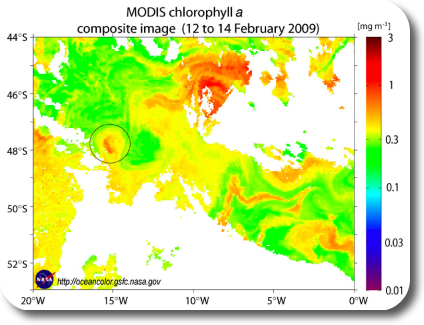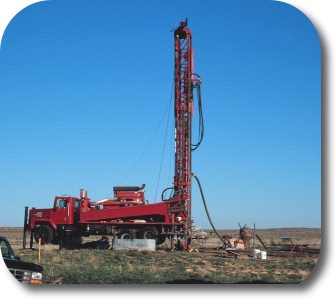Archive for the ‘Technology’ tag
Identi.ca Digest Feature Broken
Folks, I really like the open standard identi.ca, which is commonly referred to as an “open source twitter”. What do I use identi.ca for? – When I come across a news-item that is interesting, but doesn’t seem to be big enough for an individual post, I used to post a link to this news-item on identi.ca. This process is very nice, because I can post to identi.ca via adium. If there is at least one such identi.ca post (they call it a “dent”), then it showed up in two ways on planetwater.org: as a daily digest (this one for example) or every dent in the sidebar under “Identi.ca updates”. Both the digest and the sidebar are created with a plugin called “identi.ca tools“.
The sidebar still works, but I think the “daily digest” feature is broken. I just tried to find a solution, however unfortunately I could not find one. Unfortunately, the plugin doesn’t seem to be developed actively. So I guess there won’t be any daily digests for at least a while…
I could move to twitter and use twitter tools, but for now at least I’m a little hesitant.
Any ideas?
update Tuesday; September 1, 2009: It seems like there are also some problems with the layout in the Safari browser. For all the apple-maniacs: please be patient, I will look into it, as soon as I’m back! Why don’t you use Opera in the meantime? 😉
update Saturday; September 5, 2009 It seems like both things work again: identi.ca digest feautre as well as the format of planetwater.org on Safari. I swear I didn’t change any setting. Yay to self-healing! 🙂
Geoengineering
Recently, I ran into the word geoengineering quite frequently. I kind of thought of it as a form of geotechnical engineering, but it seemed like the things that were talked about had not very much to do with geotechnical engineering.
This blog post will try and shed some light into what geoengineering implies. As [wikipedia][1] points out right at the start of its article on “geoengineering“, this term is not to be confused with “geotechnical engineering”! To keep confusion at a minimum level, let’s start with some definitions:
Definitions
To clarify things, here are a few related important definitions from wikipedia:
Geoengineering: manipulate the Earth’s climate to counteract the effects of global warming from greenhouse gas emissions.
Planetary engineering is the application of technology for the purpose of influencing the global properties of a planet. The goal of this theoretical task is usually to make other worlds habitable for life. Geoengineering ti the application of planetary engineering techniques to Earth.
Terraforming is a type of planetary engineering by which a planet’s surface conditions are altered to be more like those of Earth
Geotechnical Engineering is the branch of civil engineering concerned with the engineering behavior of earth materials
Geoengineering
One of the blog posts I came across recently which talk about geoengineering was a post by Miriam Goldstein at The Oyster’s Garter. She discusses the risks and benefits of geoengineering, especially a type of geoengineering called “iron fertilization”. This proposal involves “deliberately stimulating plant growth in the ocean with the aim that the excess material will be permanently sequestered in the deep sea. This would remove carbon from the atmosphere”. For German speaking readers, here is a nice summary. Other types of geoengineering she discusses include stratospheric aerosols, cloud whitening, atmospheric carbon capture, and geochemical carbon capture.
Probably, Miriam is talking about the same iron fertilization project as the german news-magazin “Der Spiegel” in its article from January 14th, 2009. “Der Spiegel” reported then that the project has been halted due to “environmental concerns” – the same concerns which have been raised by Miriram. On January 27th, the german federal research ministry allowed the Polarstern to conduct the experiment (see also this report). The AWI already posted first measurement results. I am not a remote sensing expert, but I kind of believe this map showing that more algae live in the area where the iron was put into the ocean. However, the total range of chlorophyll concentration on the map is from 0.1mg/m3 to 3mg/m3. That’s one order of magnitude. Map taken from here

Map showing chlorophyll a concentration in the ocean at the are where iron was applied (circled) and in the vicinity of that area.
Another set of measurements made available by the Alfred Wegener Institute are depth profiles of dissolved oxygen, silicate, ammonium and chlorophyll taken at two different moments in time: before the iron was put in place and four days after. Again, I am not a biologist or oceanologist, but the changes do not seem extremely high. But then, it’s only after four days.

Concentration profiles of relevant aqueous concentrations before (red) and after (blue) the iron was brought out.
To conclude, I guess it’s too early to conclude if the experiment was successful or not. However, it seems a very risky and monetary intensive experiment.
Here are two more posts dealing with geoengineering:
James Hrynyshyn at “Living on an Island of Doubt in a climate of change” posts some similar doubtful concerns about the effectivity of geoengineering. He writes:
As Lenton and Vaughan write, geoengineering really only makes sense as a part of a larger strategy that includes cutting back hard on greenhouse gas emissions.
Wired reports on a “Carbon Burial” project, also referred to as “geological sequestration”, that will deposit a million metric tons of carbon dioxide into the ground by 2012. This is such a hot topic, it probably deserves an individual post.
After all these novel approaches, an interesting side-node from some classic geotechnical engineering, with an interesting outcome – Wired reports:
Drillers accidentally hit a pocket of molten rock underneath a working geothermal energy field in Hawaii, a lucky break for geologists that could allow them to map the geological plumbing that created everything we know as land.
update Wednesday; April 15, 2009: Wired has an article from a researcher on board a boat in the southern ocean.
Advances in Water Well Drilling
I first read about EDI Exploration Drilling International GmbH when my girlfriend read the “VDI news” this weekend. I saw the picture of a nice drill rig, and instantaneously I was reminded about my drilling days, and hooked (great layout! :-)).

It seems like those EDI guys had a pretty smart idea: the “fluid finder”. On the picture this thing looks like a Waterloo Profiler, but bigger. They put it just above the bit when they drill mud rotary. It saves time when they want to pump water out of the hole: They don’t need to jack all the drill rods out of the hole, but can just drop a pump inside the drill rods, and use the “fluid finder” as a screen. According to the VDI-article, it seems like it’s mostly used for exploratory holes. I think it can save time and money, but I’m not sure how valuable it is for scientific / environmental projects. Although unfortunately, I’ve never seen it live.
Disable Pathogens to Make Drinking Water
There’s a new approach to drinking water treatment: “Disabling” pathogens by means of genetic engineering might make “dirty” water drinkable, reports Science Daily.
Water Balloon Exploding in Slow Motion
This is a little movie of a water-balloon exploding after somebody stuck a needle into it. The cool thing: it’s filmed at 2000 frames per second!
(via wired)
Deep Holes and the Green Party
Drilling
There is no water, there is no oil, there is no other mineral without drilling. Even open pit mines need bore holes for exploration and subsequent geostatistical analysis. Drilling a hole certainly is no easy task. It can be tricky, it can be frustrating, but like with other similar things, it is highly rewarding when the hole is completed, and maybe the well installed, developed, and working. Maybe, one day, I’ll write about my drilling experiences in detail. For now, here are a few links related to some exciting aspects of drilling:
The International Deep Ocean Drilling Program with their immensely cool drill ship has created a Google Earth Visualization of their drill locations.
Wired has put up some general information about oil drilling, after Chevron completed a 30,000ft (~10.000m) hole in the Gulf of Mexico. Here is a sketch of the layers that are drilled through, and here is the full article.
Probably very little drilling is needed for mountain top mining. The Bush-administration has recently lifted rules in favour of mountain top mining.
Impacts on Environment
Germany just agreed on reducing emission of climate gases — in the future. At the same time, according to lighterfootsteps.com, there are five things that are worse than global warming: the end of cheap oil, the collapse of ocean ecosystems, the coming water crisis, deforestation, and nuclear weapons. Of course, this is also nothing new, the latter two items for example are the classic stomping grounds of the Green Party in Germany — or maybe even the reason why they exist.
Speaking of ocean ecosystems, the amount of garbage introduced into oceans, especially the Mediterranean, is extreme. Note: not only garbage, but also war destroys ecosystems.
Via the “goole earth blog” I found out that the Popular Science Magazine has an issue dedicated to the “future of the environment“, accompanied by a google earth layer to highlight where areas of substantial impact are.
Water Gadget
The newsweek has a report on a little device that is really cheap and supposedly can produce small amounts of clean water.
Loetschberg Tunnel Completed
The Loetschberg Basis Tunnel is completed and the first train rode through it. This tunnel together with the Gotthard tunnel are the two main tunnels through the Alps in Switzerland, connecting the north (Germany) with the south (Italy). The Gotthard tunnel is still under construction and will not be completed for another few more years.

The Loetschberg tunnel is about 35 kilometers long, and will be used for cargo trains putting trucks on the train, and for high speed passenger trains. Cars will still go over the mountains. Before the construction about 1.5 million trucks travelled through Switzerland in north-south direction. After completion, the number is expected to drop to 650,000. Besides these environmental savings, the ride through the tunnel will save time as it is twice as fast as the ride over the mountain and will be cheaper than the truck prices for truck companies
How is this related to water? — As any tunnel they had huge water inflows at various stages of drilling, and there is a pretty neat water collection system in place now for the normally infiltrating groundwater.
In 2003 I was part of a field trip to the south portal in Raron, Switzerland. We saw the drilling machine in action, and the geotechnical lab and the rock-recycling facility.
The ZDF has a movie on it; The news from the tagesschau; The news from the handelsblatt; The news from the NZZ; The news from the independent;
Pull Water out of Air
These guys supposedly made a machine that pulls water out of air. They say it works like a salt shaker, but bigger and for more water.
Pollution Shield to Protect Earth?
Another interesting Globe and Mail article today… Dr. Crutzen of Germany’s Max Plack Institute for Chemistry suggests a human made “shield” of pollution that should protect earth from incoming radiation…